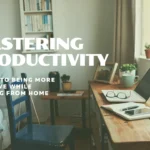Latest Posts
June 30, 2025 Exploring the Role of Intrapreneurs: Innovation Drivers Within Organizations
June 30, 2025
Exploring the Role of Intrapreneurs: Innovation Drivers Within Organizations
June 30, 2025
 Mastering Productivity: A Guide to Being More Effective While Working from Home
June 30, 2025
Mastering Productivity: A Guide to Being More Effective While Working from Home
June 30, 2025
 Understanding the New Department of Labor 2024 Overtime Rules
Understanding the New Department of Labor 2024 Overtime Rules
Newsletter
Sign up to receive email updates from the Freightpath.
"*" indicates required fields
Tariffs: The Upside
June 30, 2025
When you hear the word tariffs, what comes to mind? If you’re like most people, you probably think of trade wars, higher prices at the store, or tense negotiations between countries. And that’s fair—tariffs have earned a bit of a bad rep over the years. But here’s the thing: while tariffs can be controversial, they’re not all doom and gloom. In fact, under the right conditions, they can be a pretty powerful tool for economic growth, national security, and long-term prosperity.
So, let’s break it down. What are tariffs, really? Why do countries use them? And more importantly, what are the upsides? Buckle up—we’re about to dive into a side of tariffs that doesn’t get nearly enough airtime.
What Exactly Are Tariffs?
At their core, tariffs are taxes imposed by a government on goods imported from other countries. Think of them as a kind of “entry fee” for foreign products crossing a border. For example, if the U.S. puts a 25% tariff on imported steel, that means foreign steel companies have to pay a 25% tax to sell their steel in the U.S.
The immediate result? Those foreign goods become more expensive. And that’s kind of the point—tariffs are meant to give a leg up to domestic producers by making their foreign competition a little pricier.
But like most things in economics, it’s not that simple. There are ripple effects, countermeasures, and a whole lot of debate. Still, it’s worth exploring the reasons why governments might actually want to use tariffs—and how, in some cases, they can really pay off.
1. Protecting Infant Industries
Let’s start with a classic argument for tariffs: protecting “infant industries.”
Imagine a country trying to develop a local solar panel industry. Local manufacturers are just getting started—they’re hiring workers, investing in factories, building supply chains. But there’s a problem: they can’t compete with cheaper, more established foreign companies that have been making solar panels for decades.
Without some kind of protection, the local industry could collapse before it even has a chance to grow. That’s where tariffs come in. By taxing foreign solar panels, the government makes them more expensive, giving the local companies a fighting chance.
This approach isn’t just theoretical—it’s been used throughout history. The United States, Germany, South Korea, and even China have all used tariffs to nurture homegrown industries before exposing them to full-blown global competition.
Tariffs give breathing room. And when used strategically, they can create the foundation for a thriving domestic industry that later competes globally on its own merits.
2. Boosting National Security
Let’s be real—there are some industries you just don’t want to outsource, no matter how cheap the foreign version is. We’re talking about defense, energy, food production, critical technology—stuff you absolutely need to function as a sovereign nation.
Tariffs can help ensure that these essential industries don’t get hollowed out by cheaper foreign competition. Take steel and aluminum, for example. These are materials used in everything from military vehicles to infrastructure. If a country loses its ability to produce them domestically, it becomes vulnerable in times of crisis.
That’s one reason you’ll often see national security cited as a reason for tariffs. It’s not just about economics—it’s about making sure a nation can stand on its own two feet if global trade gets disrupted.
3. Creating Jobs at Home
Here’s another benefit that gets a lot of attention: tariffs can help keep jobs from being shipped overseas.
Let’s say a U.S.-based textile factory is struggling because it’s cheaper to make clothes in Bangladesh or Vietnam. If the government imposes tariffs on imported clothing, suddenly the playing field shifts. Domestic factories become more competitive, and companies might choose to keep their operations in the U.S. instead of moving them abroad.
That means more jobs at home—and not just in the factories themselves. You get a ripple effect: more work for suppliers, more demand for local services, more money circulating in the local economy.
Now, it’s true that tariffs can raise prices on some goods. But for communities that have seen jobs disappear over the years, the stability and dignity of work can outweigh the added cost at the checkout counter.
4. Encouraging Domestic Investment
Tariffs can also encourage businesses to invest more in domestic production. If companies know they’ll be protected from cutthroat foreign competition, they’re more likely to build factories, expand operations, and train workers at home.
That investment pays off in the long run. Not only do you get more robust supply chains, but you also build expertise and innovation that keep your industries competitive on a global scale.
For example, when the U.S. imposed tariffs on imported solar panels in 2018, it spurred new investments in domestic solar manufacturing. Companies that were once hesitant to build in the U.S. suddenly had a reason to do so—and that meant more jobs, more innovation, and more energy security.
5. Balancing the Trade Playing Field
Not every country plays by the same rules when it comes to trade. Some governments heavily subsidize their industries, manipulate their currencies, or impose hidden barriers to protect their markets while enjoying open access to others.
Tariffs can be a way to push back. They send a message: if you want fair access to our market, you’ve got to play fair too.
In that sense, tariffs can be a tool of negotiation. Countries sometimes use them as leverage to get better trade deals, force reforms, or even protect intellectual property.
The goal isn’t always to keep tariffs forever—it’s to use them as a bargaining chip to fix imbalances that harm domestic industries.
6. Building Resilient Supply Chains
We all learned a tough lesson during the COVID-19 pandemic: when global supply chains break down, things get ugly fast.
Countries realized that relying too heavily on other nations—especially for essential goods like medicine, semiconductors, or PPE—was risky business.
Tariffs can help bring some of that production back home, or at least encourage companies to diversify where they get their stuff. That makes the whole system more resilient. It’s not about isolationism—it’s about being smart and prepared.
7. Supporting Green Transitions
Here’s a newer twist: tariffs can support environmental goals.
Say a country wants to move toward clean energy. If cheap, polluting products flood the market from countries with weak environmental standards, it becomes harder for cleaner, greener alternatives to compete.
Enter carbon tariffs—taxes on imported goods based on their carbon footprint. They level the playing field and reward companies that invest in sustainability.
The European Union has already started down this path with its Carbon Border Adjustment Mechanism, and other countries are considering similar moves. Tariffs like these could help accelerate the shift to cleaner production—without letting foreign polluters undercut progress.
8. Preserving Cultural and Strategic Industries
Sometimes, it’s not about economics—it’s about values.
Countries may want to protect industries that are central to their culture, heritage, or way of life. That could be family farming, traditional crafts, or even media and entertainment.
Tariffs can offer a buffer against cultural erosion in a globalized world. They give space for unique identities to survive and thrive, even when global megacorporations dominate the landscape.
It’s Not All Roses: A Quick Reality Check
Okay, before we get too carried away—it’s important to acknowledge that tariffs aren’t a magic solution. They can lead to trade disputes, retaliatory tariffs, and higher prices for consumers. They can strain diplomatic relationships and create inefficiencies in the economy.
In other words: tariffs are a double-edged sword.
The key is using them strategically, not reflexively. They should be part of a broader economic vision—not a knee-jerk reaction to every trade imbalance or political pressure.
So, When Do Tariffs Work?
Tariffs tend to be most effective when they are:
• Targeted: Focused on specific industries, not sweeping across the board.
• Time-limited: Used as a temporary boost, not a permanent crutch.
• Transparent: Backed by clear goals and honest communication with the public.
• Complemented: Paired with investments in innovation, education, and infrastructure.
When used wisely, tariffs can strengthen economies, protect communities, and support national goals. They’re not about isolation—they’re about smart, strategic engagement with the global economy.
The Bottom Line
Tariffs have a reputation problem—and maybe some of that’s deserved. But they also have an upside that’s worth paying attention to. In a world of shifting power dynamics, climate change, and economic uncertainty, tariffs can be a tool for resilience, fairness, and growth.
They’re not a cure-all, but they’re not a villain either. Sometimes, they’re just what a country needs to level the playing field, invest in itself, and protect its future.
So the next time you hear about tariffs in the news, remember: there’s more to the story than just sticker shock. Sometimes, a little protection goes a long way.
John Delgado
CEO @ FreightPath Inc. | CSCMP Corporate Member | We Deploy The Industry’s Most Comprehensive Global Supply Chain Curriculum | 500+ Course Library | gofreightpath.com/course-catalog
